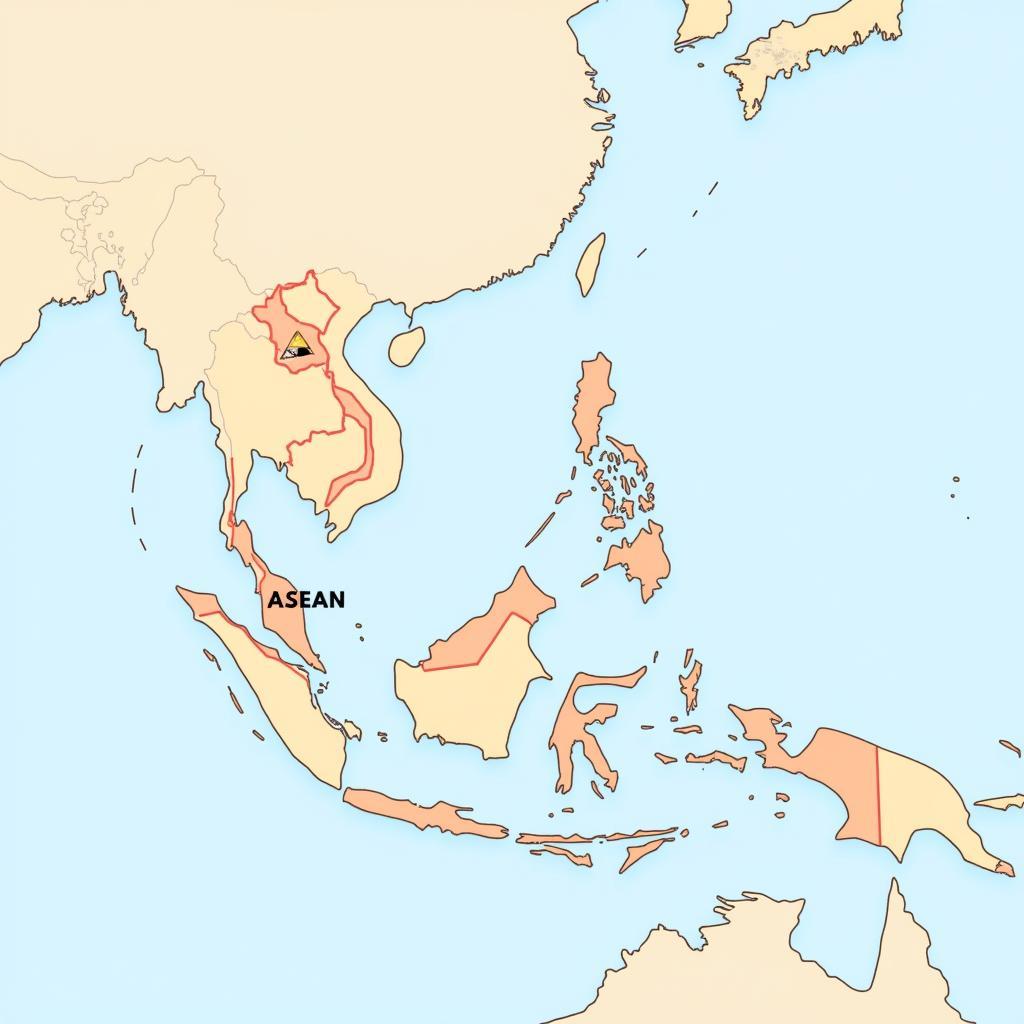ASEAN’s emergence as the 5th largest economy globally signifies its growing economic power and influence on the world stage. This remarkable achievement is a testament to the region’s dynamic growth, driven by a young and vibrant population, increasing urbanization, and a rapidly expanding middle class. But what does this mean for the region, its people, and the global economy? Let’s delve deeper.
Understanding ASEAN’s Economic Powerhouse
ASEAN’s combined GDP has propelled it to become a major player in the global economy. This growth isn’t just a number; it represents the collective efforts of its member states and their commitment to regional integration. From bustling metropolises to emerging markets, ASEAN’s diverse economies offer a unique blend of opportunities and challenges. This robust growth has attracted significant foreign investment, further fueling the region’s economic engine. Key sectors such as manufacturing, tourism, and technology have played a crucial role in this economic transformation.
The rise of the digital economy within ASEAN is another significant factor contributing to its economic strength. With increasing internet penetration and a burgeoning e-commerce sector, ASEAN is rapidly becoming a digital hub, attracting tech giants and startups alike. This digital transformation presents both opportunities and challenges, particularly in terms of infrastructure development and digital literacy.
 ASEAN Digital Economy Growth
ASEAN Digital Economy Growth
Factors Contributing to ASEAN’s Economic Success
Several key factors have contributed to ASEAN’s impressive economic growth. Firstly, the region’s young and growing population provides a large and increasingly skilled workforce. This demographic dividend is a major asset, driving consumption and productivity. Secondly, rapid urbanization has led to the development of vibrant cities and urban centers, attracting investment and creating economic opportunities.
Thirdly, ASEAN’s strategic location at the heart of Asia makes it a crucial hub for trade and investment. The region’s proximity to major markets like China, India, and Japan provides significant advantages for businesses operating within ASEAN. Furthermore, ASEAN’s commitment to regional integration and cooperation has fostered a favorable environment for economic growth. Initiatives like the ASEAN Economic Community (AEC) aim to create a single market and production base, further enhancing the region’s competitiveness.
 ASEAN Trade and Investment Landscape
ASEAN Trade and Investment Landscape
Challenges and Opportunities for the 5th Largest Economy
While ASEAN’s economic prospects are bright, the region also faces significant challenges. These include infrastructure gaps, inequality, and environmental concerns. Addressing these challenges will be crucial for ensuring sustainable and inclusive growth. However, these challenges also present opportunities for innovation and development. For example, the need for improved infrastructure opens up opportunities for investment in sustainable infrastructure projects.
What are the key challenges and opportunities for ASEAN as the 5th largest economy? Well, navigating geopolitical uncertainties and ensuring equitable growth are paramount. Balancing economic development with environmental sustainability is another crucial aspect. Additionally, fostering innovation and technological advancement will be key to maintaining ASEAN’s competitive edge.
A prominent economist, Dr. Wei Lin, Director of the ASEAN Economic Research Institute, emphasizes this, stating, “ASEAN’s position as the 5th largest economy presents immense opportunities, but navigating the complex geopolitical landscape and fostering inclusive growth are crucial for sustained prosperity.”
The Future of ASEAN: Maintaining Momentum
Maintaining ASEAN’s economic momentum will require continued commitment to regional cooperation and integration. Strengthening regional institutions, promoting good governance, and investing in human capital will be crucial for ensuring sustainable and inclusive growth. Furthermore, embracing innovation and technological advancements will be key to navigating the rapidly changing global landscape.
Ms. Anya Sharma, a leading expert on Southeast Asian economics at the Global Institute for Economic Development, adds, “ASEAN’s future economic success hinges on its ability to leverage technology, invest in human capital, and promote sustainable development practices.” She further notes, “Addressing inequality and fostering inclusive growth will be essential for ensuring that the benefits of economic progress are shared by all.”
 ASEAN Future Economic Outlook
ASEAN Future Economic Outlook
Conclusion: ASEAN’s Rise on the Global Stage
ASEAN’s rise as the 5th largest economy is a remarkable achievement, reflecting the region’s dynamic growth and potential. By addressing the challenges and seizing the opportunities that lie ahead, ASEAN can continue its trajectory of economic growth and become an even more significant force on the global stage. This journey will require continued collaboration, innovation, and a commitment to sustainable and inclusive development, ensuring that the benefits of economic progress are shared by all.
FAQ
- What countries make up ASEAN?
- What is the ASEAN Economic Community (AEC)?
- What are the main drivers of ASEAN’s economic growth?
- What are the key challenges facing the ASEAN economy?
- How can ASEAN maintain its economic momentum?
- What is the role of technology in ASEAN’s economic future?
- How does ASEAN’s economic growth impact the global economy?
Common Scenarios and Questions
- Scenario: An investor interested in exploring opportunities in the ASEAN region.
- Question: What are the key sectors for investment in ASEAN?
- Scenario: A student researching the economic development of Southeast Asia.
- Question: How has ASEAN’s economic integration impacted its member states?
- Scenario: A business owner looking to expand their operations into ASEAN.
- Question: What are the regulatory and legal considerations for doing business in ASEAN?
Further Exploration
For more information on related topics, explore these resources:
- ASEAN Free Trade Area (AFTA)
- ASEAN Investment Area (AIA)
- ASEAN Connectivity
Contact Us
For assistance, please contact us:
Phone: 0369020373
Email: [email protected]
Address: Ngoc Lien Village, Hiep Hoa, Bac Giang, Vietnam
We have a 24/7 customer service team.

